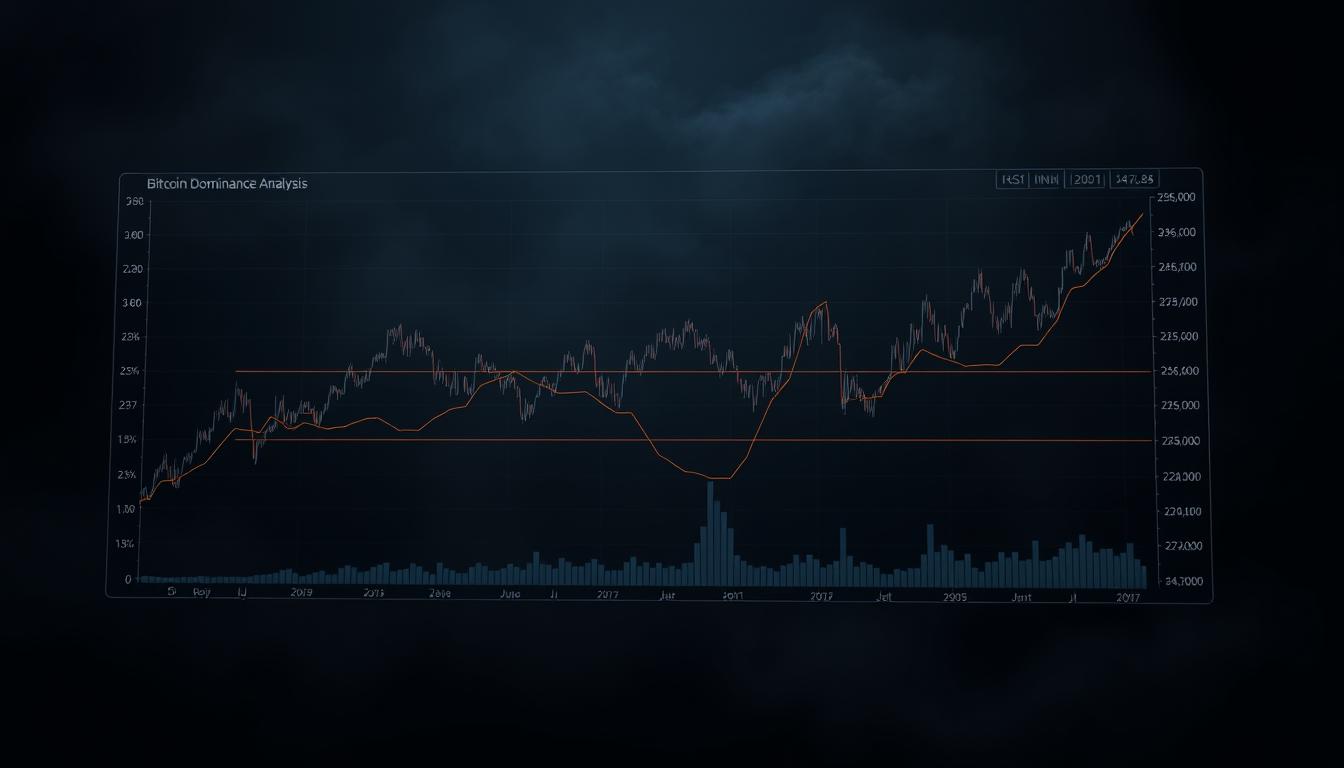Now Reading: On Chain Analysis Crypto Metrics Explained: A Beginner’s Guide
- 01
On Chain Analysis Crypto Metrics Explained: A Beginner’s Guide
On Chain Analysis Crypto Metrics Explained: A Beginner’s Guide

Welcome to the world of blockchain investment intelligence. This guide unlocks the power of public ledger information for making smarter digital asset decisions.
Traditional market charts only show price movements. They miss the real story happening beneath the surface. Blockchain networks record every transaction, creating a transparent financial history.
This public information gives investors unprecedented visibility. You can see actual network usage, money flow, and participant behavior in real time.
Our beginner-focused approach makes complex concepts simple. You’ll learn how to interpret verifiable activity instead of relying solely on speculation.
This knowledge creates a significant advantage. Understanding fundamental network health helps you spot trends before they appear on price charts.
Key Takeaways
- Blockchain data provides transparent, real-time information about network activity.
- This approach moves beyond price charts to examine fundamental network health.
- Beginners can learn to interpret verifiable transaction patterns.
- These metrics reveal actual user behavior and economic flows.
- Combining this data with traditional methods creates stronger investment strategies.
- Public ledgers offer insights impossible in traditional financial systems.
- Understanding network fundamentals helps identify long-term value.
Introduction to On-Chain Analysis and Crypto Metrics
The digital ledger system provides unprecedented access to transaction information that was previously unavailable in traditional markets. This transparency creates a foundation for deeper market understanding.
This methodology examines publicly recorded transaction details on distributed networks. It turns raw ledger entries into actionable intelligence for market participants.
Defining On-Chain Analysis
This approach systematically studies permanent transaction records on public ledgers. Every wallet interaction, timestamp, and contract execution becomes analyzable data.
The methodology transforms basic transaction details into meaningful patterns. Researchers can track fund movements between addresses and assess network health.
Importance for Crypto Investors
Market participants gain direct visibility into actual user behavior. This moves beyond price charts to examine fundamental network activity.
Investors can validate hypotheses with verifiable data. They identify trends before price movements reflect them and understand influential participant actions.
| Aspect | Traditional Market Data | Blockchain Data | Investor Advantage |
|---|---|---|---|
| Transparency | Limited institutional access | Publicly available to all | Level playing field |
| Timeliness | Often delayed reporting | Real-time recording | Immediate insights |
| Verification | Third-party dependent | Independently verifiable | Reduced reliance on speculation |
| Granularity | Aggregated summaries | Individual transaction level | Detailed behavior analysis |
This analytical approach supports better timing of entries and exits. It helps develop fundamental understanding of network adoption beyond simple price prediction.
Fundamentals of on chain analysis crypto metrics explained
The bedrock of effective distributed ledger assessment lies in comprehending fundamental measurement tools. These quantitative indicators reveal the true health and adoption of digital asset networks.
Core measurements track asset issuance, transfer patterns, and supply dynamics. Every blockchain performs these basic functions regardless of technical design differences.
Understanding ledger structure helps extract meaningful patterns from recorded information. Analysts can see transferred value, usage frequency, and participant distribution.
These essential measurements serve as building blocks for advanced frameworks. Investors construct comprehensive market views from multiple complementary data perspectives.
The evaluation process examines both individual wallet interactions and overall network statistics. This creates multi-dimensional understanding of system health.
Proper interpretation requires considering each ledger’s unique characteristics. Transaction models and consensus mechanisms vary across different protocols.
Mastering fundamentals empowers distinction between genuine economic activity and artificial volume. Analysts identify sustainable growth versus temporary speculation patterns.
This foundation enables progression toward sophisticated techniques like cohort assessment and predictive indicators. Solid understanding of core measurements supports better investment timing.
What is On-Chain Analysis and Why It Matters
Blockchain ledger investigation provides market participants with unparalleled visibility into actual economic activity. This approach transforms raw transaction records into meaningful investment intelligence.
Every participant gains access to the same quality of information traditionally reserved for institutional players. The methodology democratizes market intelligence through transparent ledger technology.
Blockchain Transparency and Data Integrity
Public ledgers create a revolutionary paradigm where every transaction becomes part of a permanent record. This transparency eliminates concerns about data manipulation that affect traditional financial reporting.
The immutable nature of blockchain information ensures absolute integrity. Cryptographic verification mechanisms make transaction records computationally impossible to alter.
This creates trustless verification where analysts rely on mathematical certainty. The system provides reliable insights into actual value transfers and holder behavior patterns.
Real-Time Insights into Market Activity
Immediate data propagation represents one of the most powerful advantages. Analysts observe market activity as it occurs rather than waiting for delayed reports.
This temporal advantage enables proactive investment strategies. Traders can identify large movements and institutional accumulation the moment these events happen.
The combination of transparency and real-time access levels the playing field. Retail investors track the same wallet addresses and transaction patterns as sophisticated firms.
The Role of Blockchain Data in Shaping Crypto Trends
Every transaction recorded on public networks contributes to a comprehensive dataset that reveals genuine market trends and user behavior. This information provides the empirical evidence needed to distinguish sustainable growth from temporary speculation.

The accessibility of this data creates a level playing field for all market participants. Investors can track real network activity that drives long-term value creation.
Data Sources and Public Ledgers
Public ledgers serve as the primary source for blockchain data analysis. Each network maintains unique record-keeping structures based on its technical design.
Blockchain explorers like Blockchair and Etherscan provide basic transaction histories. More sophisticated platforms aggregate cross-chain metrics for deeper insights.
Technical users can operate their own archival nodes for direct data access. This ensures independence from third-party providers whose methodologies may vary.
| Data Access Method | Technical Requirement | Information Depth | Best For |
|---|---|---|---|
| Blockchain Explorers | Basic web browsing | Single transaction level | Quick verification |
| Analytics Platforms | None to basic | Aggregated metrics | Trend identification |
| Archival Nodes | Advanced technical skills | Raw complete data | Independent research |
| API Services | Development knowledge | Customized data streams | Application integration |
Understanding different data sources helps analysts recognize genuine network trends. Standardization challenges require careful methodology when comparing activity across chains.
Tracking Portfolio Holdings and Transaction Analysis
Monitoring digital asset portfolios through public ledger data creates powerful investment advantages. This approach examines both static holdings and dynamic fund movements.
Investors gain complete visibility into wallet contents across multiple addresses. They see exactly which assets different participants hold at any moment.
Portfolio Tracking Benefits
This method goes beyond simple balance checking. Portfolio tracking enables performance measurement across different wallets.
Users identify misplaced addresses and analyze asset allocation across networks. This creates comprehensive understanding of investment distribution.
Understanding Transaction Patterns
Every blockchain transfer carries a unique hash identifier. This permanent record includes sender, recipient, timestamp, and amount details.
Analysts distinguish accumulation behavior from distribution phases. They identify exchange deposits suggesting potential selling activity.
| Aspect | Portfolio Tracking | Transaction Analysis | Combined Advantage |
|---|---|---|---|
| Focus | Static holdings | Dynamic movements | Complete picture |
| Data Type | Balance snapshots | Flow patterns | Behavioral insights |
| Timeframe | Current state | Historical activity | Trend identification |
| Application | Asset allocation | Strategy replication | Informed decisions |
Pattern recognition reveals behavioral signatures like regular accumulation. Investors can implement copy-trading strategies by monitoring successful traders.
Security applications include tracking wallets associated with suspicious activity. This combination provides deep understanding of participant actions and strategies.
Deciphering Token Movements and Exchange Flows
Exchange flow monitoring offers real-time insights into investor behavior through token transfer patterns. This approach tracks how digital assets move between personal wallets and trading platforms.

These movements reveal immediate market sentiment before price changes occur. Understanding these patterns helps investors anticipate potential price pressure.
Interpreting Inflows and Outflows
When tokens flow into exchanges, it often signals selling intent. Investors typically deposit assets to trading platforms when preparing to execute sell orders.
Conversely, withdrawals from exchanges suggest holding behavior. Moving tokens to personal storage reduces immediate selling pressure.
The volume of these transfers provides critical context. Large sudden inflows may precede significant price declines. Sustained outflows during weak markets often indicate accumulation.
Real-time monitoring creates actionable trading signals. Investors can identify selling pressure before it impacts prices. They can also spot accumulation phases before broader recognition.
Different exchange types reveal varied behaviors. Transfers to derivative platforms may indicate hedging strategies. Movements to decentralized exchanges suggest different patterns than centralized platforms.
Historical data validates this approach’s predictive value. The 2022-2023 USDC outflows demonstrated capital exiting the ecosystem, signaling bearish conditions.
Institutional Movements and the ETF Effect
Spot Bitcoin ETF approvals marked a revolutionary shift in how investors can monitor institutional capital flows. Financial giants like BlackRock and Fidelity created publicly trackable wallets that provide unprecedented transparency.
This development allows real-time observation of massive fund movements. Market participants gain immediate insights into traditional finance allocation patterns.
Monitoring Corporate Treasury Shifts
Public companies adopting digital assets as treasury reserves created another breakthrough. Firms like Strategy demonstrate institutional confidence in Bitcoin’s value proposition.
Instead of waiting for quarterly reports, analysts monitor corporate wallets continuously. This eliminates information lag inherent in traditional financial reporting.
The transparency enables assessment of institutional conviction levels. Investors observe accumulation strategies during various market conditions.
How ETFs Reflect Market Sentiment
ETF wallet tracking provides direct measurement of institutional investor sentiment. Large inflow days into funds like BlackRock’s IBIT generate strong bullish signals.
These flows confirm robust demand from sophisticated market participants. They suggest attractive entry points for capital allocation.
Conversely, ETF outflows provide early warning signals of institutional caution. This real-time visibility creates actionable investment intelligence before price movements reflect the activity.
Whale Alerts and High-Volume Transactions
Whale watching has evolved from oceanography to digital markets as investors track large wallet movements. These major holders possess substantial cryptocurrency positions that can influence entire ecosystems.

There’s no fixed threshold defining whale status. A wallet holding significant amounts of one token might be minor in another market. Context determines influence rather than absolute numbers.
Setting Up Alerts for Whale Movements
Modern platforms make monitoring large holders accessible to everyone. Services like Arkham provide customizable notifications through email, Telegram, or webhooks.
Investors receive real-time updates when tracked wallets execute specific transaction types. This creates immediate awareness of potentially market-moving activity.
Retail traders often copy successful whale strategies. They assume large holders possess superior intelligence or timing capabilities worth replicating.
| Tracking Method | Setup Complexity | Alert Speed | Best Use Case |
|---|---|---|---|
| Platform Notifications | Simple | Real-time | General monitoring |
| Custom Webhooks | Advanced | Instant | Automated trading |
| Manual Explorer Checks | Basic | Delayed | Periodic review |
| Social Media Feeds | None | Variable | Sentiment gauge |
Impacts on Market Dynamics
Whale transactions create immediate price pressure and liquidity effects. Large sales can trigger cascading effects in leveraged markets.
Psychological impact often exceeds the actual transaction volume. Publicized movements generate social media attention that amplifies market reactions.
Understanding context prevents misinterpretation. Not all large movements indicate buying or selling intent—some represent internal wallet management.
Exploring Cross-Chain Activity and Multichain Analytics
The emergence of cross-chain interoperability has transformed how users interact with digital assets across different blockchain networks. Modern participants operate across multiple ecosystems rather than limiting themselves to single environments.
EVM-compatible protocols have created interconnected networks sharing similar development environments. Chains like Polygon and Arbitrum enable seamless application deployment across different systems.
The Rise of EVM-Compatible Blockchains
These compatible networks allow developers to build once and deploy everywhere. Users benefit from familiar interfaces while accessing diverse ecosystem features.
The shared technical foundation reduces barriers to multichain participation. This interoperability drives increased user engagement across multiple platforms.
Bridges and Token Transfers Across Networks
Bridge protocols facilitate movement between different blockchain environments. Platforms like Stargate Finance have seen substantial growth in both transaction frequency and volume.
Monitoring these transfers provides valuable insights into user behavior patterns. Analysts can track preferences for specific ecosystems and emerging protocols.
Understanding cross-chain bridges helps identify strategic behaviors across networks. This includes yield optimization and risk diversification strategies.
Multichain analytics reveals comprehensive user profiles spanning multiple addresses. This complete picture enables better understanding of modern blockchain activity.
On-Chain vs Technical Analysis: A Comparative Overview
Investment strategies often face a critical choice between two distinct data sources. Price chart examination and ledger-based verification offer different perspectives on market behavior.

Understanding Price Chart Limitations
Price-focused methods rely exclusively on historical trading patterns. They attempt to predict future movements using indicators like moving averages and support levels.
This approach operates on the assumption that past behavior repeats. However, it cannot verify whether actual network activity supports these patterns.
Blockchain verification provides ground truth for market assumptions. While charts show price action, ledger data reveals the real behaviors driving those movements.
| Aspect | Price Chart Method | Ledger-Based Method | Investor Benefit |
|---|---|---|---|
| Data Source | Historical trading patterns | Real-time transaction records | Multiple perspectives |
| Primary Focus | Price prediction | Behavior verification | Comprehensive view |
| Time Sensitivity | Pattern recognition | Immediate activity | Proactive strategy |
| Verification Ability | Market psychology | Actual fund movements | Reduced speculation |
Sophisticated traders combine both approaches for better decision-making. They use chart patterns for timing while verifying trends with ledger data.
Macro-Economic Indicators: Market and Network-Level Data
Understanding network-level indicators helps investors see the big picture beyond individual transactions. These measurements aggregate collective behaviors across entire ecosystems.
They reveal adoption trends and fundamental health through broader participant activity. This perspective complements detailed wallet examination with comprehensive market views.
Analyzing Active Addresses and Transaction Volume
Active addresses count unique participants conducting transfers during specific periods. This metric serves as a reliable proxy for genuine user engagement.
Growing address numbers indicate expanding adoption and network vitality. Conversely, declining activity may signal reduced interest or migration to alternative platforms.
Transaction volume measurements quantify total value movement across systems. These figures reveal whether networks facilitate meaningful commerce or primarily speculative transfers.
Daily transaction counts complement value-based metrics by showing operational frequency. This combination helps distinguish between high-value institutional activity and broad retail participation.
Proper interpretation requires considering each network’s unique characteristics and use cases. The same metrics may indicate different conditions across varied blockchain environments.
Bitcoin Blockchain Analysis: Case Studies and Insights
Real-world examples from the Bitcoin network demonstrate how ledger data reveals powerful market signals. These practical cases show the direct connection between wallet activity and potential price movements.
Whale Movements and Their Impact
One compelling example involves address 1Mjundq2zvjzRKy6VbTfPKsAZhVZe4dLtY. This wallet held 1,000 BTC acquired in May 2011 when the price was $5-10 per coin.
After more than ten years of inactivity, the address moved 400 BTC on April 24, 2023. The transaction represented a gain of over 250,000% from the original acquisition cost.
The funds eventually reached exchanges like Binance and payment service Coinspaid. This movement pattern suggested liquidation intent rather than simple wallet management.
Traders monitoring such activity gain a temporal advantage. There is often a lag between old coins moving to exchanges and actual selling. This provides a window to anticipate potential downward price pressure.
Another method involves categorizing holders based on when their coins were last moved. Long-term holders demonstrate conviction by holding through volatility.
Increasing dominance by short-term holders often precedes distribution phases. These cases illustrate how Bitcoin’s transparent ledger enables forensic examination of individual behavior.
Ethereum Blockchain Insights and Entity Analysis
Ethereum’s smart contract ecosystem creates unique opportunities for tracking influential participants. Unlike simpler networks, Ethereum enables multidimensional tracking of wallet behaviors across various protocols.
This environment allows analysts to monitor not just basic token transfers but complex interactions with decentralized applications. The network’s transparency reveals how different entities manage their digital assets.
The Ethereum Foundation’s Market Influence
Specific organizations demonstrate significant impact on market sentiment through their transaction patterns. The Ethereum Foundation serves as a prime example of an entity whose wallet movements trigger predictable responses.
During 2021, the foundation executed only three major ETH transfers to exchanges. Two transactions—35,053 ETH in May and 20,000 ETH in November—coincided with local price peaks.
This pattern continued in May 2023 when a $30 million ETH transfer preceded a 5% price decline. The foundation’s actions create self-fulfilling prophecies as traders anticipate institutional insight.
Entity analysis extends beyond simple address tracking. Researchers identify wallets belonging to venture funds, protocols, and influential individuals whose behaviors carry informational value.
Understanding these patterns requires considering Ethereum’s unique characteristics. The distinction between native ETH movements and ERC-20 token transactions reveals different economic activities.
Market capitalization assessment must account for both ETH and thousands of ERC-20 tokens. This comprehensive view provides deeper insights into the ecosystem’s true value.
Visualizing On-Chain Data: Tools and Techniques
Sophisticated dashboard technologies bridge the gap between technical ledger information and practical investment intelligence. These platforms transform complex transaction records into accessible visual formats.
Utilizing Dashboards and Analytical Tools
Dune Analytics offers SQL-based dashboarding for technically proficient users. This platform enables custom queries and visualization creation. It serves advanced researchers seeking tailored insights.
Glassnode provides curated charts for broader market assessment. Users without programming skills can access comprehensive metrics. The platform aggregates key indicators across multiple networks.
DeFi Llama specializes in decentralized finance protocol data. It tracks Total Value Locked and yield percentages across hundreds of projects. The service offers free access to vital protocol information.
| Platform | Primary Focus | Technical Requirements | Best For |
|---|---|---|---|
| Dune Analytics | Custom query creation | SQL knowledge needed | Advanced research |
| Glassnode | Market-level metrics | No coding required | Broad trend analysis |
| DeFi Llama | Protocol-specific data | Basic navigation | DeFi project research |
Interpreting Data for Better Decisions
Effective interpretation combines quantitative metrics with qualitative context. Users must understand each platform’s methodology and data sources. This ensures accurate assessment of market conditions.
Dashboard utilization enables real-time monitoring of multiple indicators. Investors can spot significant changes in network activity quickly. This creates comprehensive surveillance systems for informed decision-making.
The democratization of these analytical tools levels the information playing field. Retail participants now access capabilities once exclusive to institutional teams. This empowers better investment strategies through enhanced data comprehension.
Innovations in On-Chain Analytics: New Metrics and Methodologies
Modern cryptocurrency assessment has moved beyond traditional Bitcoin-focused measurements. The digital asset landscape now demands specialized approaches for different protocols and use cases.
Rather than applying uniform standards, effective evaluation requires dynamic adaptation. Industry practices recognize that Bitcoin-centric measurements may not suit other networks.
Emerging Tools and Industry Practices
New analytical frameworks address the complexity of diverse blockchain ecosystems. Specialized tools now examine DeFi protocols, NFT markets, and gaming tokens separately.
Machine learning algorithms enhance predictive capabilities beyond basic statistics. These advanced systems identify patterns in historical transaction data.
The evolution reflects market segmentation and technological maturity. Different sectors require distinct measurement approaches for accurate assessment.
Improved data availability through sophisticated providers enables novel research. Open-source frameworks allow developers to create customized solutions.
This progression demonstrates the field’s transition to professional infrastructure. Institutional adoption drives demand for rigorous, standardized methodologies.
The Future of Crypto Analysis: Trends, Predictions, and Challenges
Forward-looking approaches to blockchain data interpretation are emerging that will fundamentally transform investment decision-making processes. Artificial intelligence integration represents the next frontier, enabling pattern recognition across massive datasets.
Real-time surveillance systems will become standard practice for institutional participants. Automated monitoring will execute trades based on predefined triggers without human intervention delay.
Cross-chain evaluation grows increasingly vital as interoperability expands. Analysts must track value flows across dozens of networks simultaneously. This maintains comprehensive understanding in fragmented ecosystems.
Privacy technologies present significant challenges for future methodologies. Zero-knowledge proofs and confidential transactions may hide portions of activity. New approaches will be needed to estimate economic behavior.
Regulatory developments will mandate sophisticated tools for compliance purposes. Exchanges and institutional players will implement advanced screening systems. This ensures proper anti-money laundering procedures.
Longer historical datasets will improve prediction accuracy through better backtesting. However, past correlations may break down as digital asset markets mature. Participant composition continues to evolve over time.
Data volume management remains a critical challenge ahead. Standardizing measurements across incompatible architectures requires industry coordination. Distinguishing genuine activity from artificial volume becomes increasingly complex.
The democratization trend continues as tools become more accessible. This creates a paradox where widespread access may diminish competitive advantages. Integration with traditional financial frameworks represents another frontier for development.
Conclusion
Blockchain data fundamentally transforms how investors approach digital asset markets. This guide has demonstrated how transparent ledger information creates unprecedented visibility into market dynamics.
Practical examples showed real-world applications from whale tracking to institutional movements. These cases prove the tangible value of monitoring actual network activity.
Successful market participants now combine multiple data sources. They verify price movements with verifiable blockchain information for better decisions.
Modern tools have democratized access to sophisticated analytics. Retail investors can now leverage capabilities once reserved for institutional teams.
The future promises even more advanced analytical methods. Yet the core advantage remains blockchain’s inherent transparency for those who interpret it correctly.
Mastering these techniques requires continuous learning and practical application. This knowledge creates sustainable investment frameworks grounded in actual data rather than speculation.
FAQ
What is the main difference between on-chain analysis and technical analysis?
On-chain analysis examines raw data from a blockchain’s public ledger, like transaction volume and wallet activity. It focuses on what is actually happening on the network. Technical analysis, in contrast, studies price charts and trading patterns to forecast future price movements. The former uses blockchain data, while the latter relies on market price action.
How can I track large holder movements, often called ‘whale alerts’?
You can monitor whale alerts using specialized platforms like Glassnode or Whale Alert. These services track high-volume transactions from major wallets. Setting up alerts for these movements can provide early signals of potential market shifts, as large transfers to exchanges often indicate selling pressure.
Why is exchange flow data important for understanding market sentiment?
Exchange flow data shows the movement of assets like Bitcoin and Ethereum into and out of trading platforms. A high inflow rate suggests holders may be preparing to sell, which can signal bearish sentiment. Conversely, a high outflow rate indicates assets are moving to long-term storage, often a bullish sign for the market.
What does the Network Value to Transactions (NVT) Ratio measure?
The NVT Ratio is a key metric that compares a network’s market cap to its transaction volume. Think of it as a P/E ratio for blockchain networks. A high NVT suggests the asset’s value may be outpacing its economic utility, potentially signaling a bubble. A low ratio can indicate the network is undervalued.
Can on-chain analytics predict cryptocurrency prices?
While these analytics cannot predict exact prices, they provide powerful insights into market strength and investor behavior. Metrics like active addresses, token movements, and supply held by long-term holders help gauge overall market health. This data is used to identify trends and make more informed decisions, rather than for precise price forecasting.
What are some reliable sources for obtaining on-chain data?
Reputable sources for this information include Chainalysis, Coin Metrics, and Messari. These providers offer dashboards with metrics on transaction activity, wallet balances, and network growth. Many of these tools visualize data to help users spot trends and patterns across different blockchain networks.















